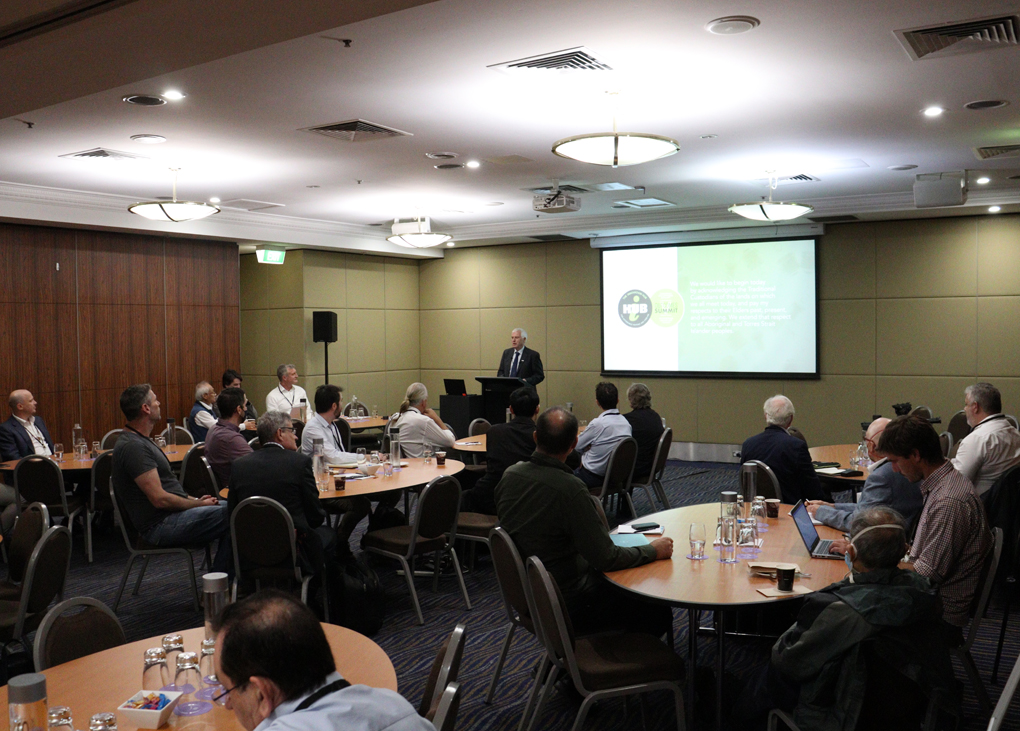Industry innovators, designers, and educators came together in Sydney and online recently for the i-Hub Outcomes Summit. After three years and more than 50 activities and completed projects, it was an opportunity to share successes, pitfalls, and next steps.
The Innovation Hub for Affordable Heating and Cooling (i-Hub) is an initiative led by AIRAH in conjunction with CSIRO, Queensland University of Technology (QUT), the University of Melbourne and the University of Wollongong, and supported by the Australian Renewable Energy Agency (ARENA) to facilitate the HVAC&R industry’s transition to a low-emissions future, stimulate jobs growth, and showcase HVAC&R innovation in buildings.
The presentations ran over an afternoon and covered the three major initiatives in the i-Hub project.
Integrated Design Studios
The first of the i-Hub’s three major initiatives looks at how to strengthen design by involving everyone early in the process.
“It’s been very much about trying to marry architecture and engineering, along with client requirements, into much better technically performing buildings,” says i-Hub Integrated Design Studio co-leader Professor Brendon McNiven. “And we’ve learnt a lot along the way.”
In total there were 14 “studios”, consisting of architecture and engineering students, an academic or studio leader overseeing them, a real-world client, and architectural, engineering and specialist consultants. These spanned eight building typologies, and produced a wealth of publications and other resources.
One key output is the Catalyst for Integrated Design guidance document – a recipe book for implementing integrated design on projects. Another is the Carbon catalogue, which compares the potential to achieve net zero for different building typologies and offers insights on how active and passive interventions allow designers to impact energy use intensity on different projects.
Data Clearing House
Moving from design to operation, the Data Clearing House (DCH) seeks to create a collaboration platform for transacting data.
Data providers could be a building BMS, IoT sensors, or even third-party cloud-data on weather or energy prices. Data users may be providing supervisory controls, for example for flexible demand, or they may be providing energy-efficiency services such as fault detection.
“They’re all disparate,” explains i-Hub Data Clearing House activity leader Dr Stephen White, F.AIRAH. “They’re all flying around in the ether, and the Data Clearing House is bringing them together and putting them into one consolidated place.”
There are now more than 60 buildings on the platform, and while the team has identified challenges, there have also been many success stories.
In one building, chiller data was shared with a third-party chiller optimisation specialist, who then created the AI to improve performance. This process was done in months – a relatively short time-frame for a project – and resulted in a 4.3 per cent summer energy saving, and a predicted 18 per cent peak demand saving.
There is also potential to tap into Australia’s HVAC systems to shed demand or perform solar soaking. As a capacity product, this flexible demand is worth in the order of $300 million a year in energy savings.
Living Labs
Although the Living Labs stream covers a wide variety of projects, one key focus has been demand-response markets. This ties in with the KPIs of the overall i-Hub project, and a strong connection between the Living Labs and the healthcare sector.
i-Hub Living Laboratories co-leader Professor Wendy Miller, Affil.AIRAH, notes that the demand-response capacity of healthcare facilities is generally substantial, because most are required by law to have back-up generators. The Living Labs initiative sought to explore just how much of that capacity could be used, because as Prof. Miller put it, “many people in the healthcare sector treat demand response either as a non-issue, or a very scary issue”.
Accordingly, the Living Labs team presented learnings about the demand-response markets that can be accessed through the healthcare system, as well as two case studies: a hospital and an aged-care facility.
The team presented the full range of demand response markets available, from the simplest to the most complicated, and the potential not only to reduce energy costs, but to receive payments from energy retailers for helping improve the stability of the grid.
A full recording of the i-Hub Outcomes Summit now is available at the i-Hub website.
 Mark Vender
Mark Vender


Leave a Reply